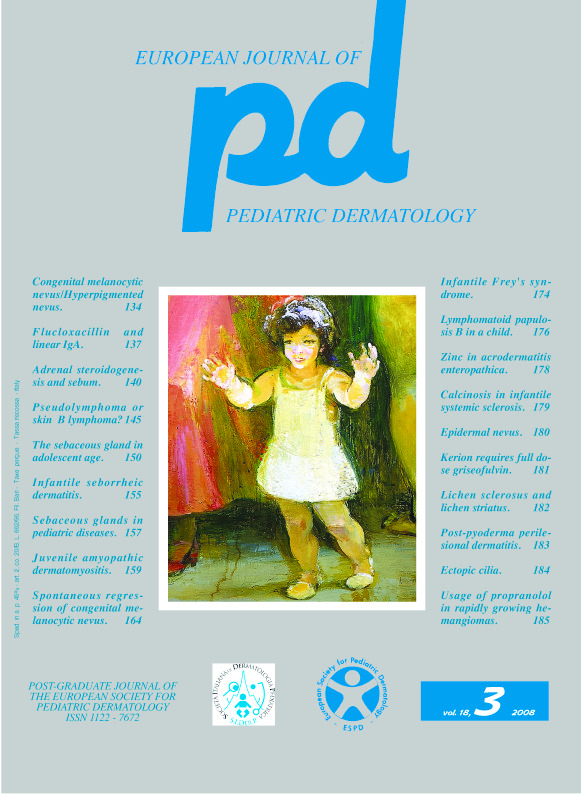Adrenal function and the sebaceous glands.
Downloads
How to Cite
Stratakis C.A. 2008. Adrenal function and the sebaceous glands. Eur. J. Pediat. Dermatol. 18 (3):140-44.
pp. 140-144
Abstract
There are some facts about the adrenal cortex that we all know from Medical School. The cortical part of the gland is divided in three areas or zones; each of these parts produces a different steroid hormone that serves a distinct physiologic function: zona glomerulosa produces mainly aldosterone and other mineralocorticoids, zona fasciculata makes cortisol and other glucocorticoids, and zona reticularis synthesizes testosterone, estrogen and other sex steroids. The physiology and pathophysiology of the adrenal cortex is due to particular enzymes that are expressed in the different zones; in fetal life very little of that compartmentalization of adrenocortical function exists; it is not until the later half of the first year of life that what we call "adult" adrenal cortex gradually occupies most of the gland. Adrenocortical development in humans and other primates is a continuum through-out life, including that of the fetus and the elderly adult. Humans and other primates are unique in having fetal adrenocortical tissue that is different from that in adult life; they are also unique in having distinct zona reticularis (ZR): adrenocortical cells dedicated to the synthesis of adrenal androgens. Human and primate ZR and fetal adrenal cortex (FA) produce the same steroid, dehydroepiandrosterone sulphate (DHEAS). In these species, FA provides DHEAS to the placenta to produce estrogens that are necessary for the maintenance of pregnancy; the need for this "placental-fetal unit" is lost at birth and the fetal zone disappears rapidly thereafter through a process of gradual adrenocortical micro-hemorrhages. DHEAS levels fall rapidly after birth to appear again in detectable quantities in adrenarche, rise throughout puberty and start to fall after the age of 40 years to almost undetectable levels in late life. Sebaceous gland physiology depends on normal adrenarche and normal adrenal androgenic steroid levels; testicular and ovarian androgens provide also important hormonal support for sebaceous gland function but they can not fully replace the lack of adrenal androgens for reasons that remain unclear.Keywords
Adrenal cortex, Androgens, Cortisol, Adrenarche, Puberty

